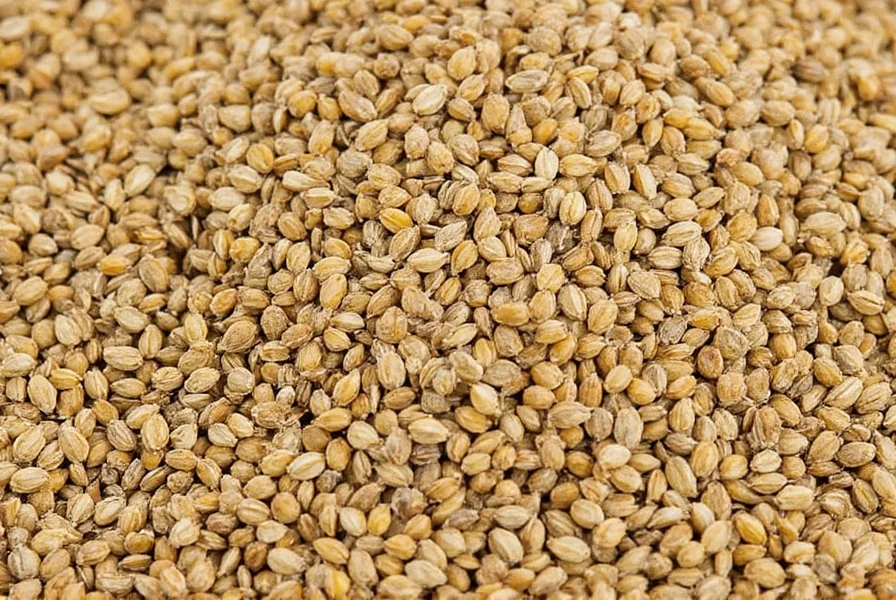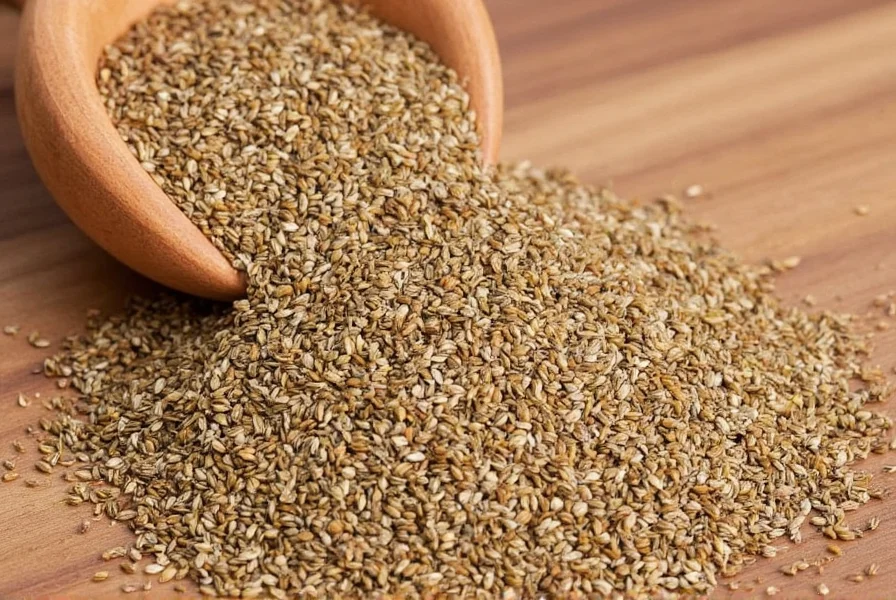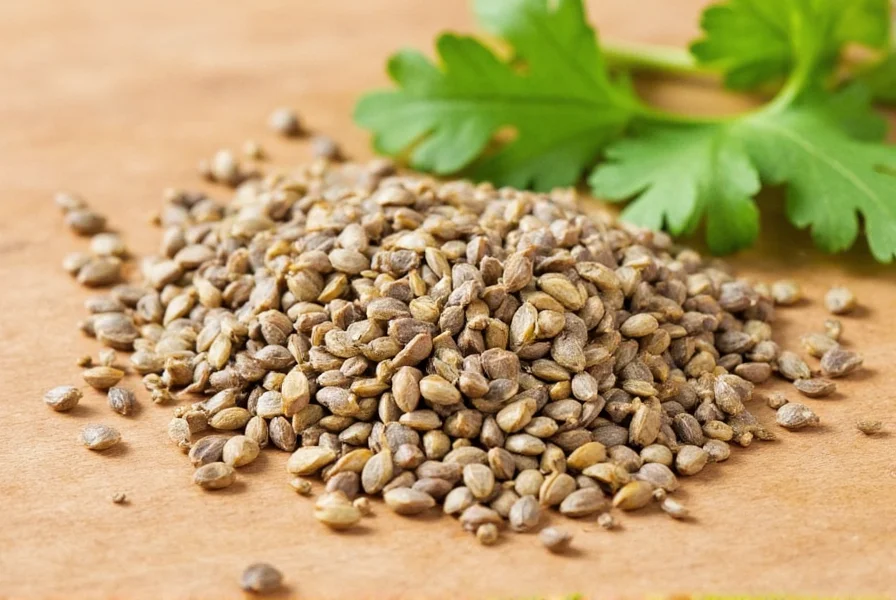Understanding Dry Coriander Seeds: Nature's Flavor Powerhouse
Dry coriander seeds represent one of the world's oldest known spices, with archaeological evidence dating back to 5000 BCE. These tiny spherical seeds come from the same plant that produces fresh cilantro leaves, but they offer a completely different flavor profile and culinary application. When properly stored and used, dry coriander seeds deliver a complex flavor that enhances everything from savory stews to baked goods.
What Exactly Are Dry Coriander Seeds?
Coriander seeds develop after the cilantro plant flowers and matures. The seeds start green and soft, then gradually turn beige to light brown as they dry on the plant. Harvesting occurs when approximately 80% of the seeds have reached this mature brown color. After harvesting, the seeds undergo a drying process that concentrates their essential oils and develops their characteristic warm, citrusy aroma with subtle nutty undertones.
Many people confuse dry coriander seeds with fresh cilantro leaves, but they're distinct components of the same plant. While cilantro leaves have a bright, sometimes polarizing flavor (due to genetic taste perception), coriander seeds offer a more universally appealing warmth that works across diverse palates. This distinction makes understanding dry coriander seeds vs fresh cilantro crucial for proper culinary application.

Culinary Applications of Dry Coriander Seeds
Chefs and home cooks worldwide rely on dry coriander seeds for their remarkable versatility. In Indian cuisine, they form the backbone of garam masala and curry powders. Middle Eastern cooks incorporate them into baharat and za'atar blends. European bakers use them in rye breads and pickling spice mixes. The seeds work exceptionally well in both whole and ground forms, each offering different flavor release characteristics.
When exploring how to use dry coriander seeds in cooking, consider these professional techniques:
- Dry roasting: Lightly toast whole seeds in a dry pan for 1-2 minutes until fragrant, which dramatically intensifies their flavor
- Timing matters: Add whole seeds early in cooking for subtle background notes; add ground seeds later for more pronounced flavor
- Pairing wisdom: They complement cumin, turmeric, and cardamom exceptionally well in spice blends
- Liquid infusion: Steep whole seeds in warm liquids like broths or milk to extract maximum flavor
Nutritional Profile and Health Benefits
Beyond their culinary value, dry coriander seeds offer impressive nutritional benefits. A single tablespoon (about 7g) contains:
| Nutrient | Amount per Tbsp | % Daily Value |
|---|---|---|
| Calories | 23 | 1% |
| Dietary Fiber | 1.4g | 5% |
| Vitamin K | 9.8mcg | 8% |
| Iron | 0.9mg | 5% |
| Manganese | 0.2mg | 9% |
Research supports several health benefits of coriander seeds, including:
- Digestive support: Compounds in coriander seeds help stimulate digestive enzymes and reduce bloating
- Antioxidant properties: Rich in polyphenols that combat oxidative stress
- Blood sugar regulation: Some studies suggest potential benefits for glucose metabolism
- Anti-inflammatory effects: May help reduce markers of inflammation in the body
Proper Storage Techniques for Maximum Freshness
The volatile oils that give dry coriander seeds their distinctive flavor gradually dissipate over time. Understanding the best way to store coriander seeds ensures you maintain their potency:
- Keep whole seeds in an airtight container away from light, heat, and moisture
- Store in a cool, dark cupboard rather than near the stove or oven
- Whole seeds maintain peak flavor for 1-2 years, while ground coriander loses potency within 6 months
- For extended storage, keep seeds in the freezer where they'll retain flavor for up to 3 years
Always check your seeds before use—fresh coriander seeds should have a pleasant citrus aroma. If they smell musty or have no scent, they've lost their flavor and should be replaced.
Maximizing Flavor: Grinding and Using Coriander Seeds
For the most vibrant flavor, grind coriander seeds just before use. The grinding coriander seeds for maximum flavor process releases volatile oils that quickly dissipate. Use these techniques:
- Coffee grinder dedicated to spices: Provides the most consistent fine powder
- Mortar and pestle: Allows control over texture from coarse to fine
- Spice mill: Convenient option for frequent users
- Rolling pin method: Place seeds between parchment paper and roll for coarse texture
When substituting in recipes, remember that 1 teaspoon of whole coriander seeds equals approximately ¾ teaspoon of ground coriander. Always adjust to taste, as flavor intensity varies based on seed age and origin.
Substitutes When You're Out of Dry Coriander Seeds
Ran out of coriander seeds mid-recipe? Understanding coriander seeds substitutes in recipes can save your dish:
- Cumin: Provides earthiness but lacks citrus notes (use ½ amount)
- Fennel seeds: Offers similar texture with sweeter anise notes
- Caraway seeds: Closest flavor profile but more intense (use sparingly)
- Coriander powder: If you have ground but not whole seeds
No substitute perfectly replicates coriander's unique flavor, but these alternatives can maintain dish integrity in a pinch. For authentic flavor, however, nothing beats the real thing.

Common Questions About Dry Coriander Seeds
Can I substitute fresh cilantro for dry coriander seeds in recipes?
No, fresh cilantro and dry coriander seeds come from the same plant but have completely different flavor profiles and uses. Cilantro leaves provide a bright, grassy flavor while coriander seeds offer warm, citrusy notes. They are not interchangeable in recipes requiring one specific component.
How can I tell if my dry coriander seeds have gone bad?
Fresh coriander seeds should have a pleasant citrus aroma. If they smell musty, damp, or have no scent at all, they've lost their potency. Visually, they should be uniform light brown; dark spots or discoloration indicate moisture exposure and potential spoilage.
Are coriander seeds and cilantro the same thing?
They come from the same plant (Coriandrum sativum) but are different components. Cilantro refers to the fresh leaves and stems, while coriander seeds are the dried fruit of the plant. They have distinct flavor profiles and culinary applications.
What's the difference between coriander and cumin?
While often confused, coriander and cumin have distinct characteristics. Coriander seeds are round with a light brown color and citrusy, slightly sweet flavor. Cumin seeds are longer, darker, and have a more earthy, smoky profile. They come from different plants and serve different culinary purposes.
Do coriander seeds need to be cooked before eating?
Dry coriander seeds are safe to eat raw, but cooking or toasting significantly enhances their flavor. Whole seeds typically require longer cooking times to release their full flavor potential, while ground coriander can be added later in the cooking process.











 浙公网安备
33010002000092号
浙公网安备
33010002000092号 浙B2-20120091-4
浙B2-20120091-4